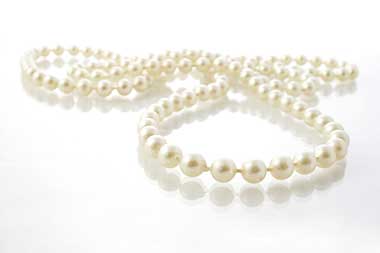The old expression ‘pearly whites’ likens human teeth to the colour of pearls because of the era in which this phrase was coined. At the time, pearls were not cultured and tended to have more of a creamy, silky white appearance. As the description suggests, teeth are not naturally paper white; in nature, very few biological materials are.
So why the sudden desire for aesthetically enhanced white teeth today? And what happens when teeth whitening goes wrong?
The colour of teeth is determined by the thickness of the enamel covering the crown of the tooth and the yellowness of the underlying dentine, which makes up the bulk of the tooth structure. The combination of these two tissues is what gives the teeth their “pearly white” appearance.
With age, adult teeth can become darker due to the gradual thinning of enamel, allowing the dentine colour to show through.
So why this desire for white or bleached teeth today?
The face is clearly important for communication, recognition and social interaction. Along with eyes, teeth and gums are key features of the face. Showing more or less of them can invoke expressions ranging from full-on aggression to high-spirited laughter.
As with the desirability and acceptability of other bodily displays, there are fads, fashions and cultural diversity in what might be considered aesthetically pleasing teeth.
Many of us know (or can remember) older members of the family or friends who wore full dentures, following the removal of all of their teeth. This was relatively common during the first half of the twentieth century.
Invariably, these artificial tooth forms were aligned, often at the insistence of the recipient, in a “picket fence” alignment using brilliant white-coloured teeth. It is unlikely that patients would want to mirror the appearance of the teeth they’d just had removed!
So the recent resurgence in the desire for white teeth is simply a variation on the attempt by our grandparents and great grandparents to improve on nature. And improving on nature can be fraught and is, by definition, unnatural. Just as we can often pick injectables faces, bleached white teeth are not difficult to spot.
But while most would argue that the prevention of oral disease (including water fluoridation) is of greater significance than a quest for aesthetically pleasing smiles, there’s no harm in altering the colour of your teeth—just as long as you seek advice from your dentist or hygienist and take care when using do-it-yourself products.
So how do these products work? And why are some so risky?
Tooth whitening attempts to make teeth appear whiter, usually by bleaching the surface enamel. The results can vary, from bright-white smiles to an almost non-existent change, depending on the original tooth colour, the cause of colour irregularities and the whitening technique used.
There are three methods of tooth bleaching available in Australia, most of which use various concentrations of oxidising agents, such as hydrogen peroxide:
- Home bleaching/over-the-counter products—where low concentrations of bleach are applied using standard trays (which aren’t moulded to the patient’s mouth);
- Bleaching in a dental surgery—to supplement to home bleaching with low-to-medium concentrations;
- Power bleaching in dental surgery—the application of high concentrations of bleach and the use of light to activate hydrogen peroxide. Rubber dams and protective glasses are used to cover the patient’s face and eyes.
Extrinsic stains—those on the outside of the tooth tissue caused by caffeine, tobacco and bacterial pigments – can be removed by an oral health professional without bleaching.
If you seek whiter teeth, your choice of application and procedure will depend on the colour change that’s required (lower concentrations deliver more modest results) and how much you want to spend. But generally, you improve your chances of success if you visit a professional.
The most common side effect is tooth sensitivity, and tissue/gum irritation—this is more common when using higher concentrations. Frequent application of tooth whitening chemicals, particularly those of high concentration, can permanently damage enamel tooth surface and soft gum tissues if not used correctly. So it’s important you get your teeth and gums checked for disease by a dentist before undergoing any whitening procedures.


